Wakefield 2016
The Wakefield 2016 show was held at the Cedar Court Hotel, Wakefield on Saturday 16th April 2016. Exhibitors were:
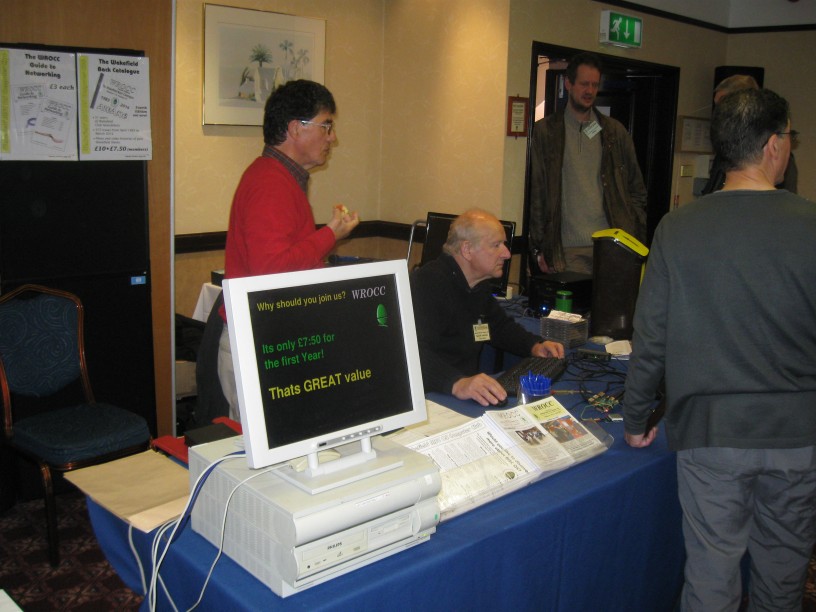
Stand 1: Wakefield RISC OS Computer Club - offering the usual WROCC magazine and help and advice
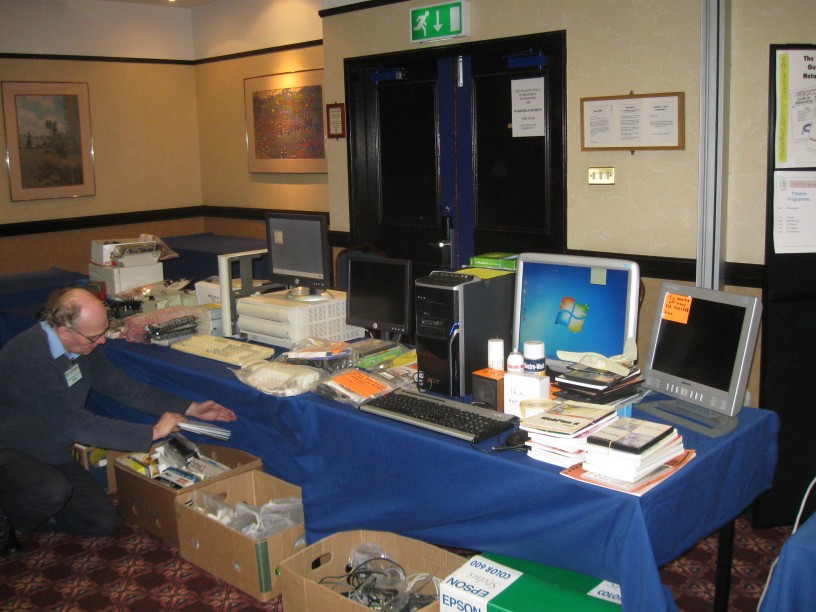
Stand 2: Charity Stall - a wide variety as usual
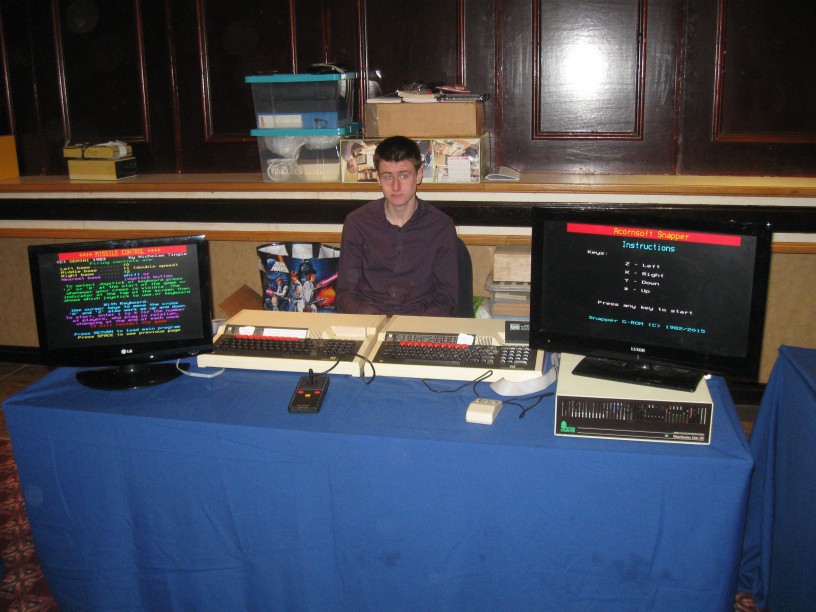
Stand 3: Alex Wilson
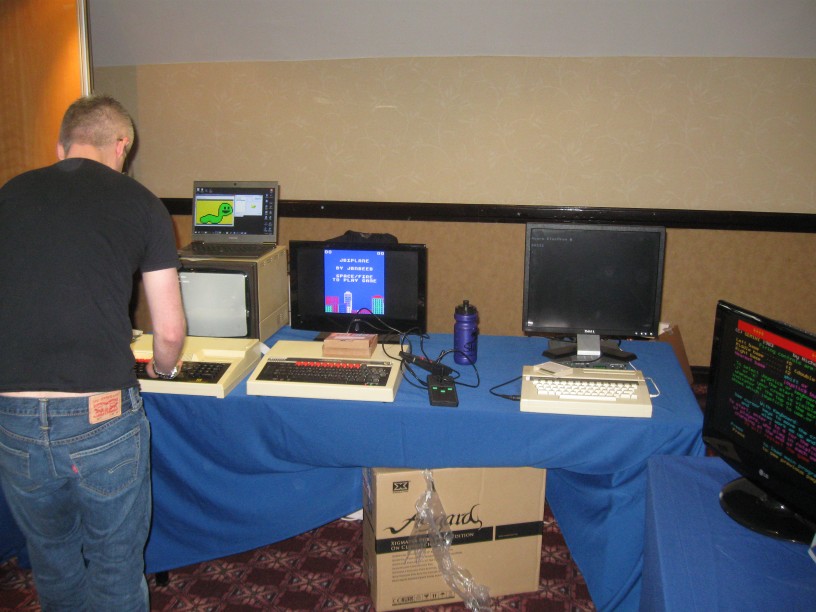
Stand 4: Retro Software (Jason Nicholls)
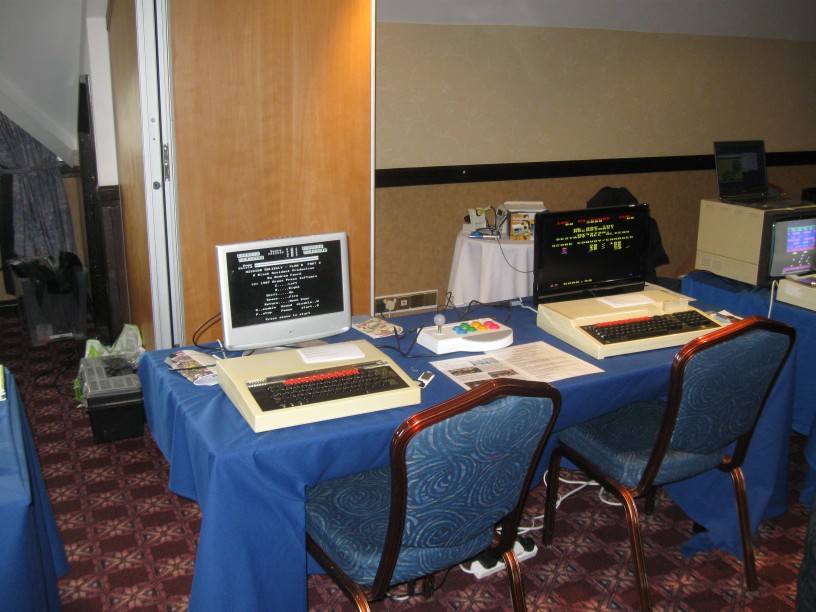
Stand 5: ABug
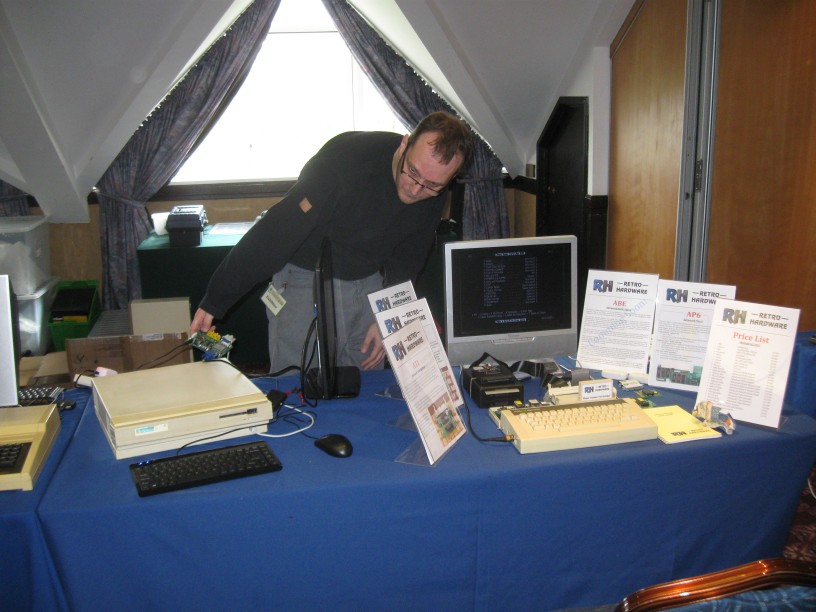
Stand 6: Retro Hardware
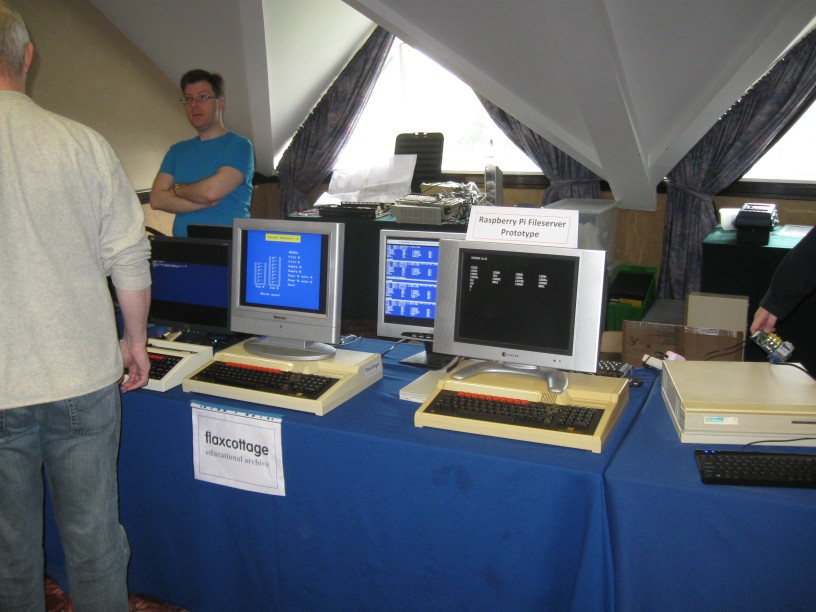
Stand 7: FlaxCottage Educational Archive
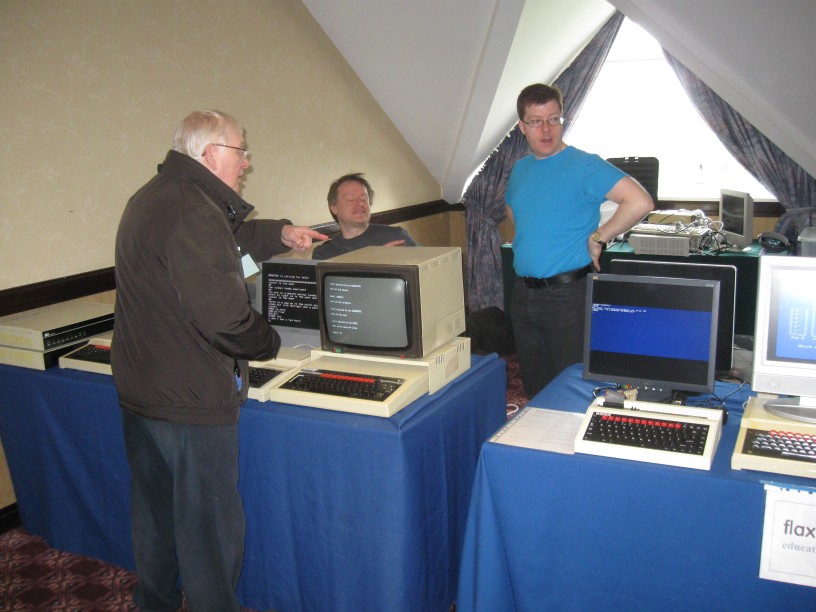
Stand 8: Damiel Jameson (Networking)
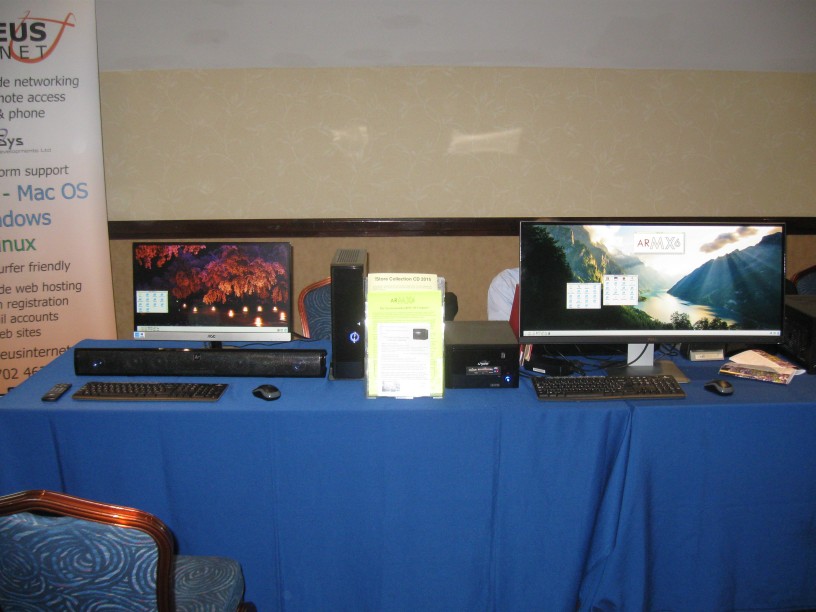
Stand 9: R-Comp & R-Comp Interactive - see theatre talk below
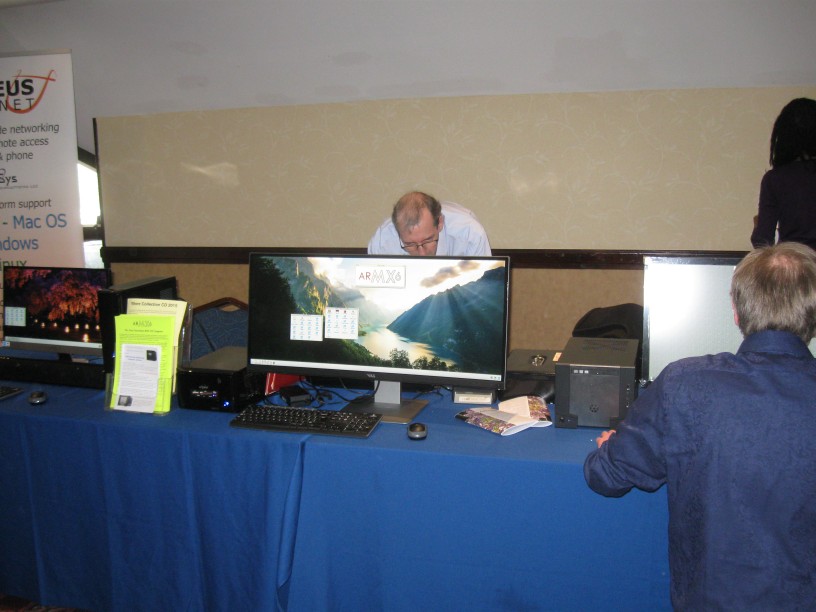
Stand 9: R-Comp & R-Comp Interactive
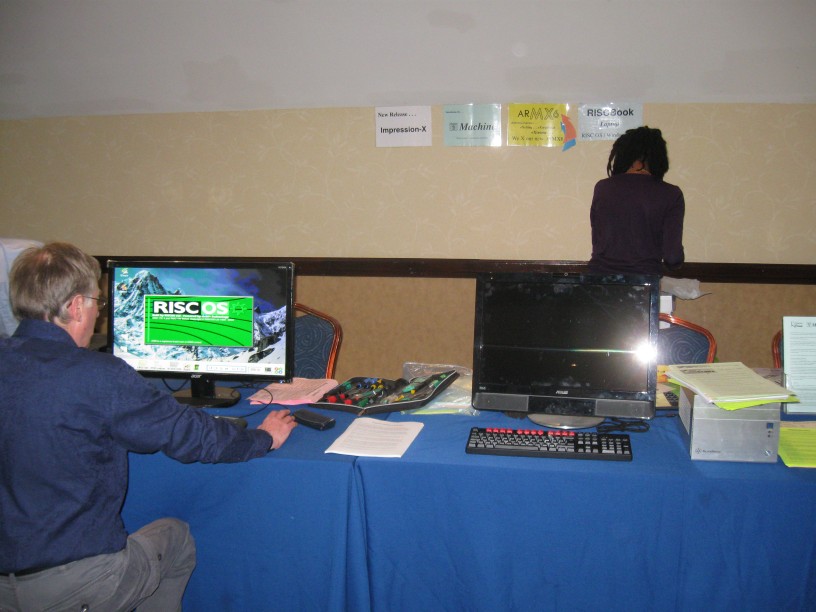
Stand 9: R-Comp & R-Comp Interactive
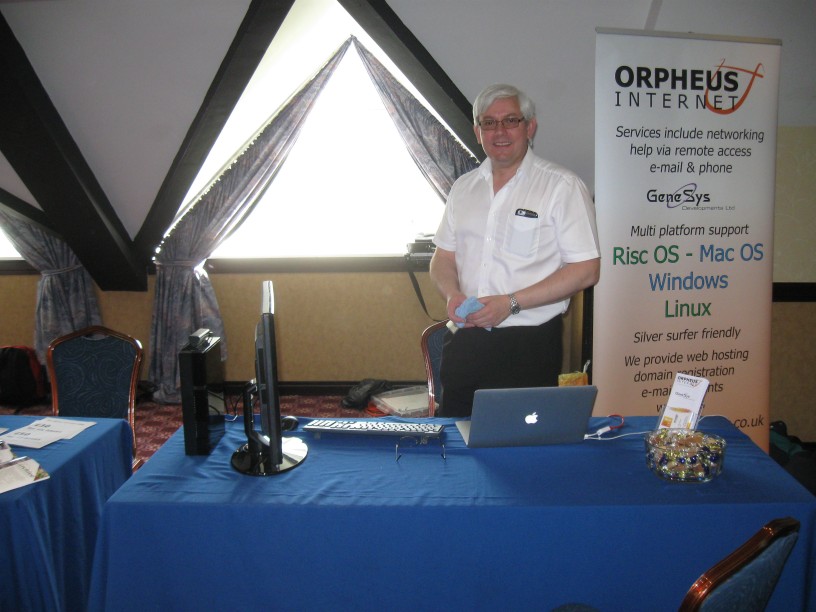
Stand 10: Orpheus Internet
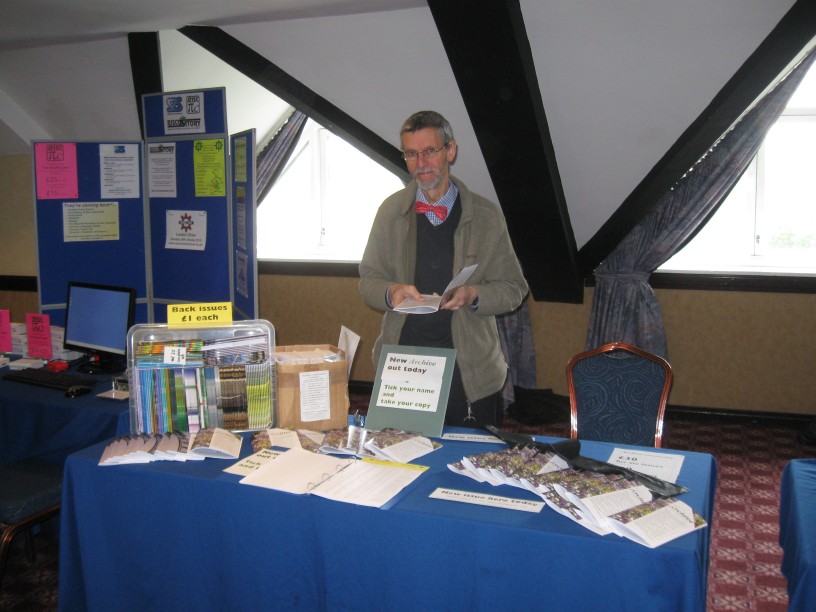
Stand 11: Archive Magazine - the latest magazine 24:1 was available at the show, Paul Beverley was covering for Jim, who had arrived in the early hours
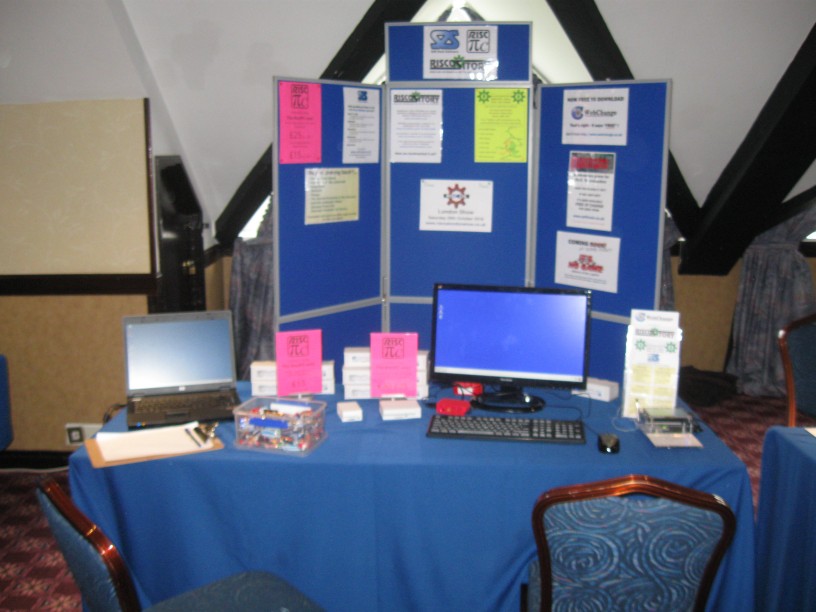
Stand 12: Soft Rock Software - the usual range of small Risc-PC-like cses
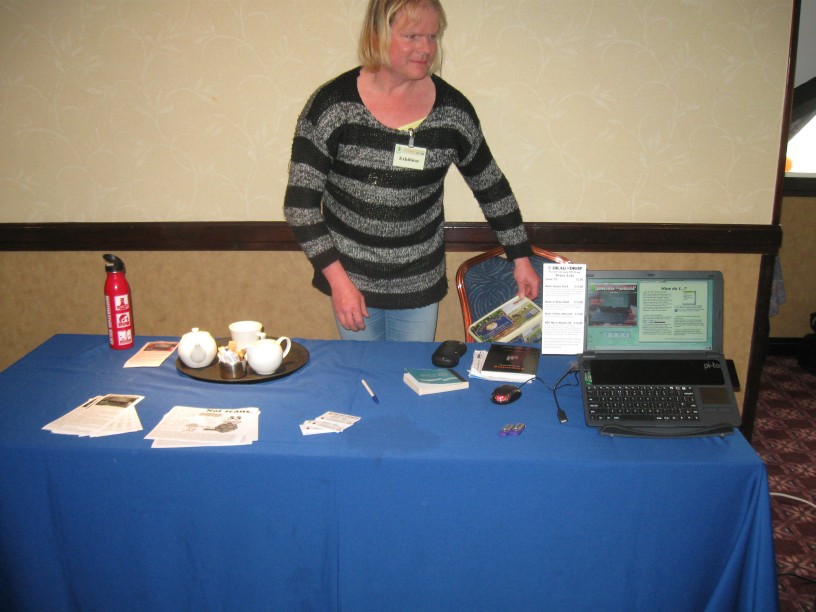
Stand 13: Drag 'n' Drop
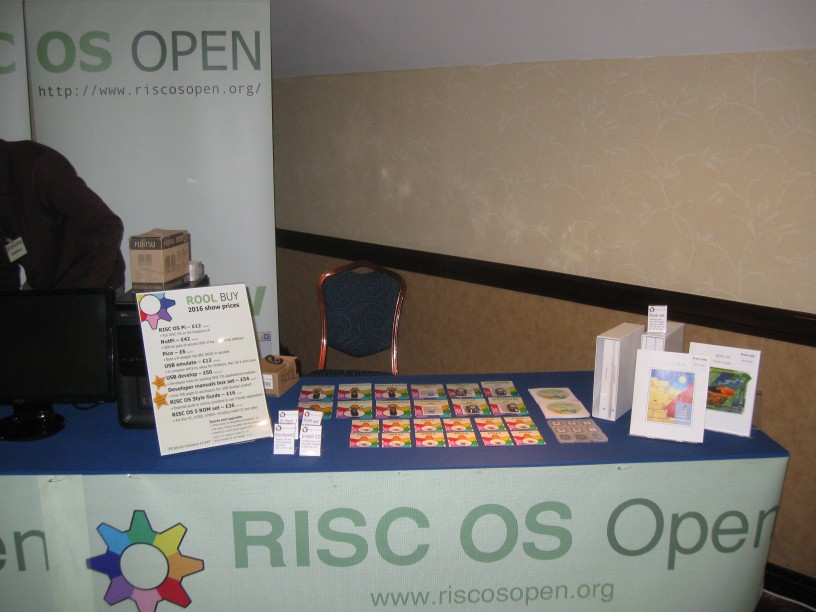
Stand 14: RISC OS Open Limited - see theatre presentation below
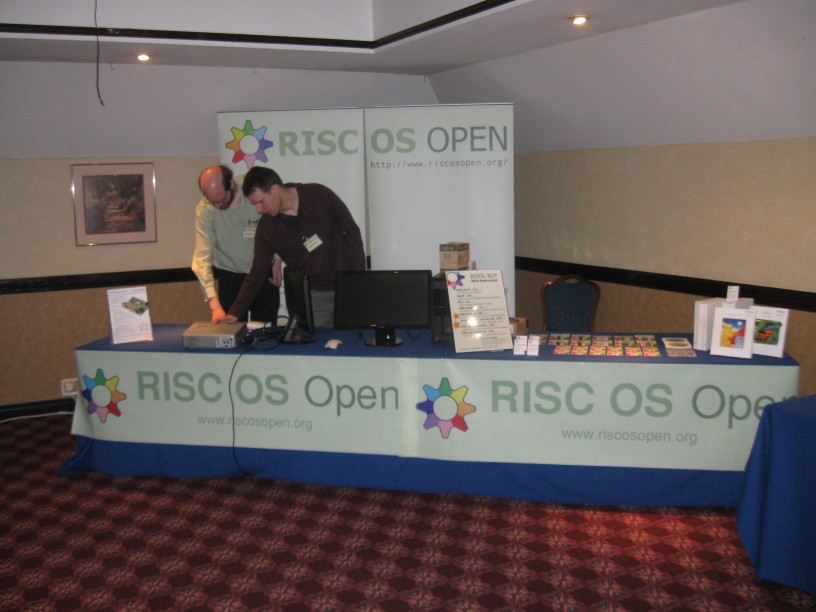
Stand 14: RISC OS Open Limited
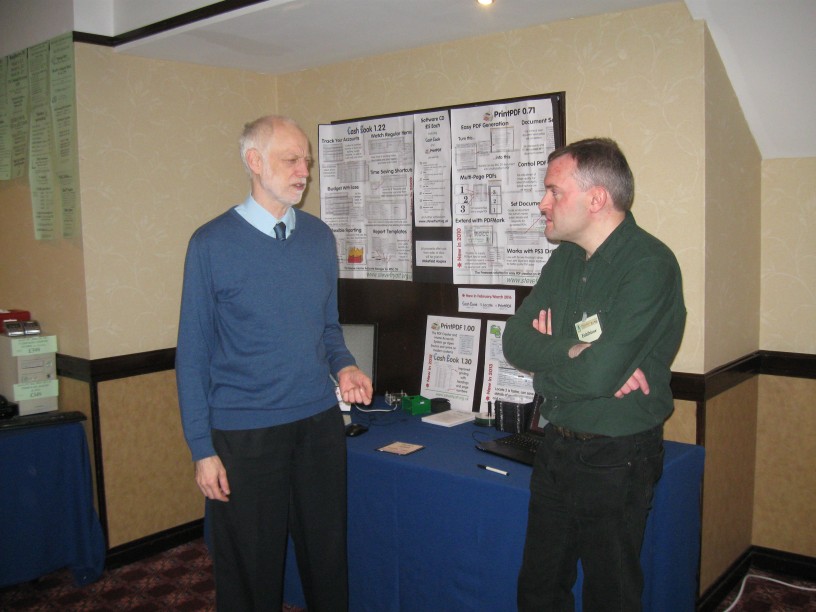
Stand 15: Steve Fryatt
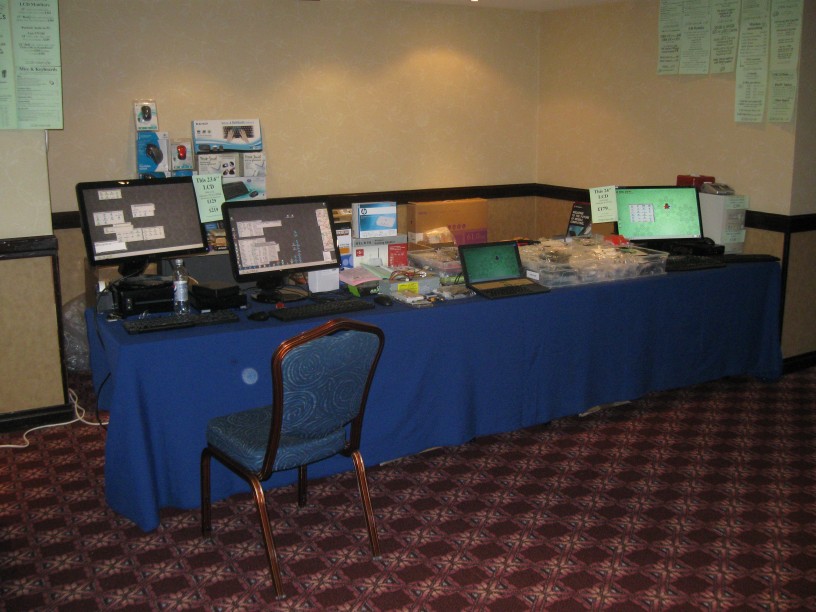
Stand 16: CJE Micors and 4D - see theatre presentation below
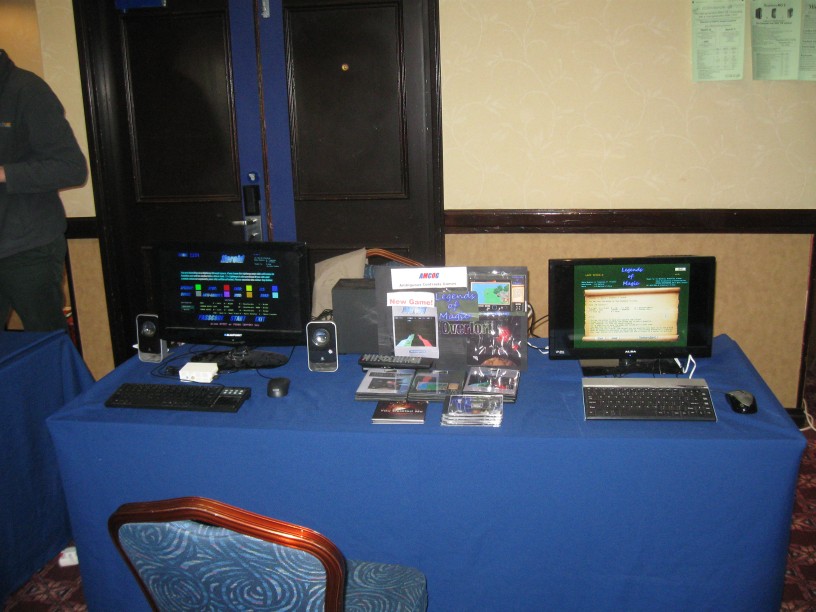
Stand 17: AMCOG Games
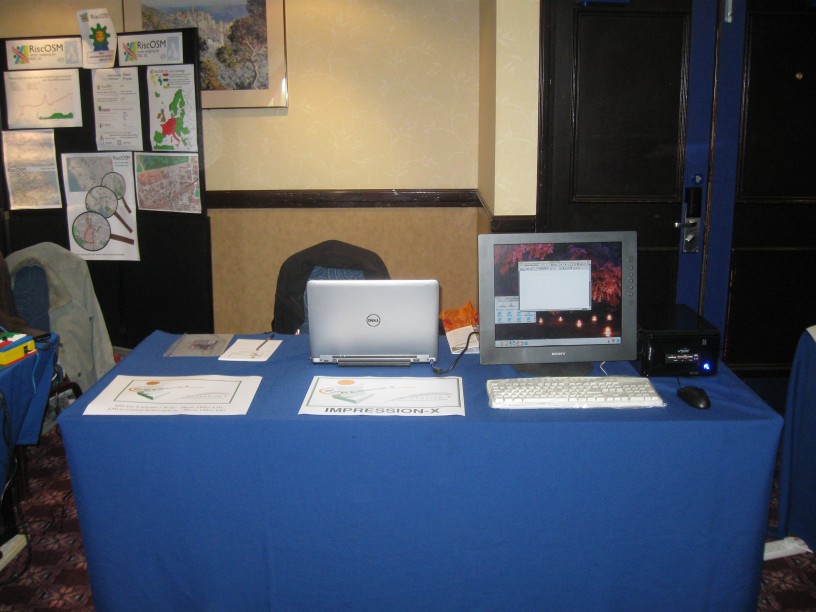
Stand 18: Impression X (Richard Keefe) - first release of the second phase did not quite make it for the show but should be available in a few weeks
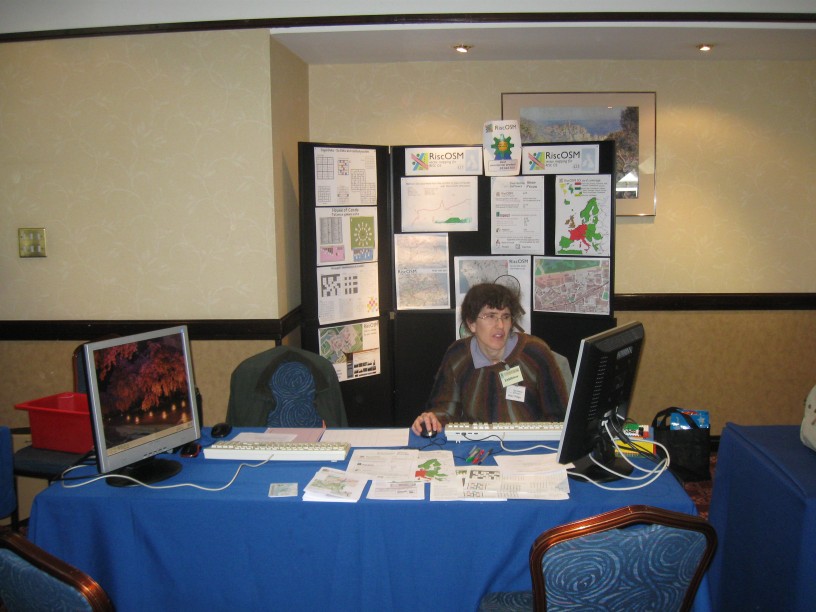
Stand 19: Sine Nomine Software - see theatre presentation below
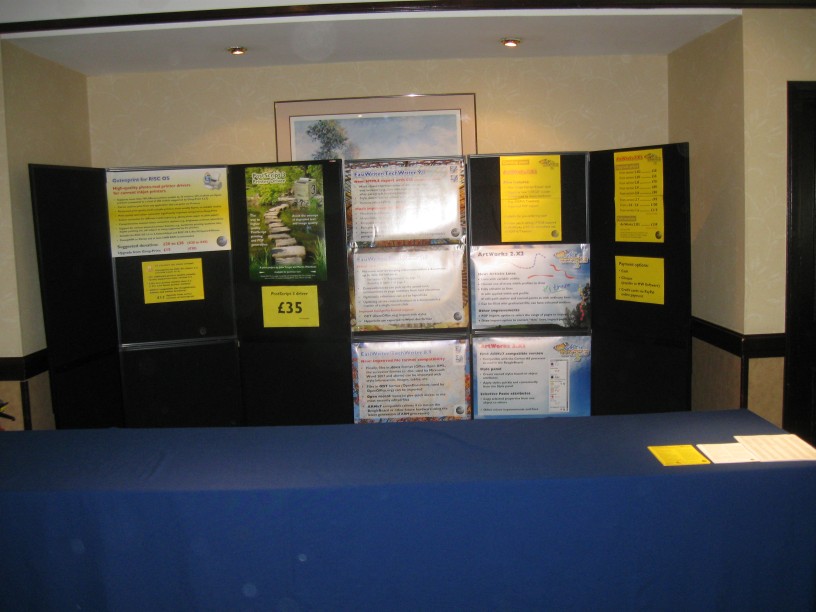
Stand 21: MW Software - ArtWorks 2.X3 is still a few weeks away but a tweaked AWRender module, which handles the new RGB format is available now to those who upgrade
I seem to have missed taking a photo of stand 20 North One Communications Limited, for which many apologies.
Theatre talks were from:
R-Comp - Andrew Rawnsley
Andrew commented that it had been another busy year the primary focus being on new computer machines, ARMX6 and TiMachine. He said that a new computer normally succeeded the previous one, offering enhanced performance in all areas but in this case both machine had separate strengths. The ARMX6 (from £699 inc. VAT) now supported audio over HDMI and '4k' screen resolution, his preferred display size being 3440x1440. There had been 7 OS upgrades since release of the ARMX6 at the South West show in February 2015 and up to 192kHz audio over HDMI and USB audio were possible given suitable attached hardware. Many improvements had also been made to memory handling. The Titanium (from £899 inc. VAT) offered more raw performance but was limited to 1920x1200 (practical limit but up to 2048x2048 was supported). It stored sprites internally as 'RGB' (red first in memory) which meant that changes were needed to some software. However it was fast and a secondary video output was being worked on to give (for example) the RISC OS desktop 3840x1200 split across two monitors each at 1920x1200. Unusually therefore both machines were available at the same time. RISCCube machines (Windows and RISC OS on the same machine, using Virtual RISC PC)) were also available.
Software included FireWorkz Pro 2 which had a major enhamcement allowing export in Excel format using compatible function names as well as some improvements to Excel input. Other improvements included MailMerge and the upgrade price was £20.
Netfetch 4 now handled top-bit-set characters btter making message headers more readable and was faster and smoother. Upgrade price was £10.
Final Doom supported the new RBG format on the new machines and had high quality digital sound and was available for £12.
Multicore work was in hand but it was difficult to say how long it would take. Hardware floating point acceleration was being added to some applications (e.g. !PDF). The Otter browser was being developed. Some commercial opportunities were thus now occurring with stable, reliable hardware using RISC OS. R-Comp machines were a collaborative effort benefiting a number of RISC OS companies.
RISC OS Open Limited - Rob Sprowson
Rob explained what ROOL had been doing.
June 2015 - NutPi had been updated for the model 2 Raspberry Pi with approximately £20000 being disbursed to the various authors featuring on the compilation.
July 2015 - Zero page relocation had been implemented, future proofing the platform and deprecating zero page access for such things as the metrognome (a memory location in zero page which provided a short cut to reading the monotonic time) and flagging up null pointer dereferencing. This was something that had become sensible once the ARM v6 with 32 bit access had been announced in 1994.
October 2015 - the DDE had been updated and the DDE books (fianlly) produced. The Style Guide was now on its thrid print run.
December 2015 - ADFS had been rewritten (sponsored by Elesar and CJE Micros) - originally 26200 lines of assembler it was now written in C making it more portable, breaking through the 256GB limit, using 4k sectors giving up to 2TB with 15 drives per controller and up to 256 controllers. The new ADFS had not yet been back-ported to Iyonix/Risc PC.
January 2016 - !Connector, a terminal programme, had been open sourced after quite a number of contributors had been contacted.
February 2016 - RPCEmu had been updated and would now work on MacOS, Linux and Windows.
Leap Day 2016 - The Pi mark 3 was released and was supported within a week due to early prototype access the main issue being the use of an ARM v8 (Cortex-A53) which, inter alia, had dropped support for a useful atomic instruction 'SWP' (which came in with ARM2) and had proved useful as an interrupt semaphore and was thus widely used. The new machine had 1GB of RAM and ran at 1200MHz.
Yesterday - the JPEG bounty had been completed - the new code allowedprogtessive and arithmetic JPEGs to be handled and the SpriteExtend module (originally based on 1994 JPEG routines), ChangeFSI and JPEG_Compress had been updated.
Rob then explained what was on the ROOL work list:
- Updated DDE with fixes for Zero Page Protection
- New Pi SD cards which await third party fixes re 'SWP' which he hoped would be the last ever RCxx release
- New NutPi SD cards which might possibly be combined with the Pi Boot card making the standalone NutPi card redundant
- Merchandising ideas (ideas from the floor were also welcomed)
- Stable release for the Pi - the technical problems all have known solutions, represented about 10 days' work but were resource constrained. Likely to cover mark 1 and 2 Pi plus Compute Module and be feature-equivalent with the stable 5.22 release (which would simplify testing) but it might cover Zero and mark 3 as well although ARM v8 bugs (which affected the mark 3) were coming to the surface. Before the next stable release some of the older software - no longer acively being developed - would need to be considered: ZPP problemms would need to be reported; 'harmless' reads from zero page could be permitted where possible; the !Patch application could automatically replace known machine-generated code sequences with a corrected equivalent; the AppAptcher module could patch specific applications.
- User Guide (the last paper copy dated from 1995) was being worked on 29 of the 62 chapters had been done. This was good 'non technical' work and volunteers were sought.
The forum would reach 2600 other readers so test nightly builds, report problems and donate!
CJE Micros - Chris Evans
Starting small Chris showed the Pi Zero in a small transparent case - still in short supply, needs recent firmware and some unusual connectors which 'we have in stock'. The RTC dongle for the pi had proved to work on all models (except CM which has no pins). A 4-port DVM (HDMI and USB) makes sense at £99 now that people have many computers. Pandaboard still offers a neat solution in a small box. So much of RISC OS is done by volunteers and we mus be grateful for their efforts. Chris Johnson's CPUClock displays clock speed as the processor reacts to high and low demnd. More importantly some systems can get hot a high speeds and can be forced to switch to low speed to allow the CPU to cool. CPUClock now works as a module so that it controls temperature for non-multi-tasking programmes.
Two 'new' machines, the Rapido Ig and the Rapido Ti, based on the IGEPv5 and Titanium boards, were now available. These had many similarities and some differences. Titanium uses a fairly large circuit board (6.7" x 8") and is presented in anneat balck case with the usual DVD drive and space for 2 PCI express cards and two or more SSD drives. IGEPv5 has similarities - both use the same processor - a Cortex-A15 - but designed by different teams. The resolution limit is 2048x2048 giving a practical limit of 2048x1440. Benchmarks have been done for all machines showing IGEPv5 and Titanium give the best raw performance. Titanium has an on-board SATA multiplier which does not slow things down. Both have at least 2GB of memory.
Differences - the Titanium has two DVI sockets gving a two-monitor soltion for large desktops, 2 serial ports and 2 Ethernet. Using the 'DIY' solution and putting Titanium into a bog standard ITX case needs a careful choice of power supply as the current drain of this board is quite low. A 240GB SSD is bundled with the Rapido Ti which uses a non-ZPP ROM build so that Aemulor will work (it needs a low vector rom). Both ZPP and non-ZPP versions of the ROM are available. ROM updates are simple and take only a few tens of seconds.. Chris also confirmed he was offering a 'price match' against a similarly specified machine.
Differences - the IGEPv5 (Rapido Ig) was somewhat cheaper, had no extra SATA ports and fewer USB sockets. The case was smaller and in some areas (for example hardware acceleration) improvements will, no doubt, be made to improve performance. 'Gigabit' networking has never achieved full (1000Mbits/s) performance under RISC OS. It was presented in a choice of three cases. About 10 days ago, booting from SD card has been improved with the ability to boot from SD card or from flash memory and some error trapping fixes (e.g. CDFS) made. The rom has been updated to use the SATA driver for direct connection of SSDs although a few SATA devices are not detected correctly).
Chris concluded by answering a few questions - !PhotoDesk was being worked on to give TRGB compatability. !Netsurf was also affected and although there was a work around, the latest versions were now fixed. A fix for !ArtWorks was now available as well.
Sine Nomine Software - Matthew Phillips
RiscOSM now supports loading of csv files containing locations based on GPX, latitude & longitude or grid references to add to a map viewas pins or as a route. The ability to export locations or routes as csv has been added. There is now a feature key(which can also be exported as a Draw file) which allows you to turn on and off different features. Whilst not a style editor it offers similar functionality. Also new is the link via Nominatim using external web connection to find details of a map item or photos near a particular co-ordinate. A URL can now be exported that will bring up a map on a non-Risc OS machine, a spotlight tool, pins can be added and objects exported as CSV files, calculating such things as length of perimeter, area covered etc.
There is a huge amount of public data - for example a real time plot of the position of each Edinburgh bus. GPS devices can record time and position and RiscOSM can import these data and 'replay' the journey and export statistics as a Draw file. There is also now better support for RISC OS 4 and 6 using dynamic areas rather than wimpslot. Some progress has also been made on support for Unicode so that foreign place names can be rendered correctly although non-Latin1 characters within the map data cannot yet be done. The upgrade is £5.
A new version of 'ImpEmail' can take an e-mail template using 'placeholders' via Impact (or Impression?) abd then drop a csv file, with column headings corresponding to the placeholders, and thus generate separate e-mails customised for each recipient, including different attachments.
Matthew concluded by mentioning ProOSM (see Archive magazine 24:1 available at the show) and asked for users to mention any feature requests. He noted that OpenVector support was being considered (which would allow objects to be in layers) but this would require considerable rewriting as the rendering was based on Draw's capabilities at present.
MW Software - Martin Würthner
To follow.